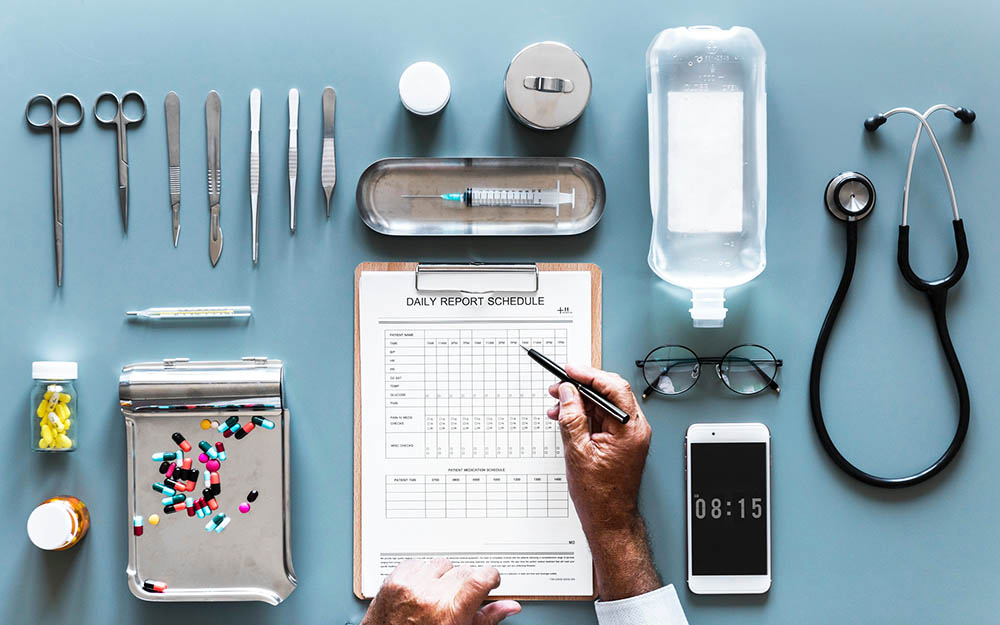The Pros and Cons of Refurbishing SUDs
Written by Josephyne King

SUDs (single use devices) were introduced by manufacturers as both a sanitary and a profitability measure. Using a medical device only once severely lowers the risk of spreading infections, while having to buy new devices for every operation means higher profits for manufacturers. The practice of SUDs first came under scrutiny in 2015, and later 2017, when hospitals were found to be reusing SUDs against the guidance of manufacturers and the government.
The reason these hospitals, including large names like Kobe University Hospital and Osaka International Cancer Institute, would risk the backlash is simple: money. Many medical devices and supplies cost upwards of ¥100,000 and are single use devices. Hospital personnel found that personally disinfecting the SUDs were worth the risk versus having to pay for another device.
The problem arises when there is no specialized and trained personnel to refurbish these devices. There are some parts of SUDs that truly should not be used again at risk of infection or failure, while other parts need special treatment in order to be reusable. This is where refurbishment companies come in. A fairly new type of company, these entities will take used medical supplies from hospitals and refurbish them.
This starts, usually, with taking each device apart in order to clean it properly. Then, the reusable parts can be sold to hospitals at a reduced cost. Before the parts can be sold, however, they must be approved for resale and deemed safe and sanitary for reuse. This process usually leads to only about 10% of the refurbished parts being sold back to hospitals.
So is refurbishing SUDs worth it?
The Pros
The obvious positive of reusing medical supplies is cost. Since refurbished devices would sell for less than new ones, hospitals would be bearing less cost per operation or appointment. The reduced costs would be both for the hospitals and the patients, as well as the government who helps cover medical costs for Japanese citizens.
Having a government sanctioned, and regulated process would also lead to greater safety. Hospitals would be less likely to risk sanitation by recycling devices themselves. Verifications of the safety and efficacy of the refurbished SUDs would only allow the best devices to be sod. In a few years, a complete infrastructure would develop that would help safely and effectively help hospitals reduce medical device costs.
Another small, though still important, factor of refurbishing devices is the environmental factor. While it is currently unknown if the refurbishment process would lead to large negative externalities, it is true that the reuse of SUDs would severely cut down on medical waste. Fewer medical devices would be used, and, as a result, less would also be manufactured. With the world currently looking for ways to become more environmentally friendly, refurbishing SUDs could be a small step forward.
The Cons
Currently, it is unknown if medical device refurbishment is a viable business model for the companies that would undertake the process. About 10% of refurbished devices are considered acceptable for reuse, meaning that 90% of the work done by the companies would lead to nothing. Whether or not the profits from the resold products is enough for companies to support this long term is yet to be known.
Another risk in this new industry is with the inspections. Only selling the sanitary refurbished devices is essential for the safety of patients, but that requires vigilant and knowledgeable inspections. Finding unbiased sources to constantly watch the supply can be a challenge, and trusting those who say they are qualified may be a risk. If one unsanitary device is let back into the market, it could hurt patients, hospitals, and the entire refurbishment industry. For this reason, refurbishment companies are the ones liable for any injuries sustained because of unsafe practices, but this is a reactionary action, not a precautionary one. In order to stay safe, hospitals and refurbishment companies must be extra safe and vigilant before products even enter operation rooms.
Conclusion
Recently, the government has started allowing the reuse of certain medical equipment, mostly to avoid another case of hospitals trying to do it themselves. It has allowed the collecting of used medical devices by certain companies for a select group of products. The same is true in a few other developed countries, where certain supplies are allowed to be refurbished for reuse, though all governments have their limits on what is allowed to be reused. The refurbished SUD market is expected to grow almost 10% over the next few years, especially in the cardiovascular and cardiology fields.
The next few years will be crucial to see if medical device refurbishment is a viable industry, and we will most likely start seeing more regulations and laws enacted to protect client safety. Whether or not hospitals will use refurbished devices is up to them, but as the market matures, and medical costs continue to rise, we will see a usage increase across the board.
Sources:
http://www.asahi.com/ajw/articles/AJ201803100001.html

About The Author
shinya iguchi